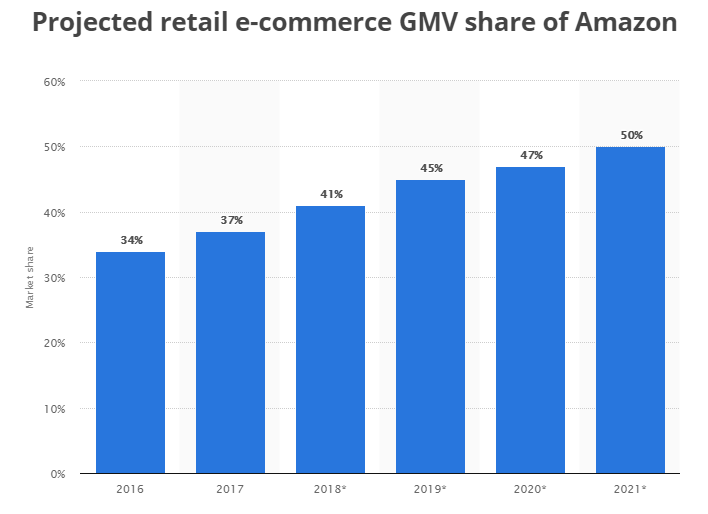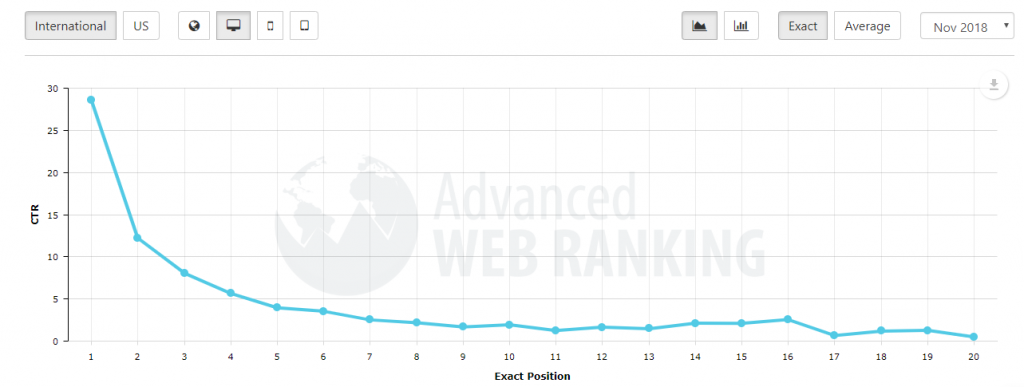When we hear the words “lead generation,” our minds automatically conjure up a B2B marketing strategy aimed at filling the top of the sales funnel. But leads are not exclusive to B2B companies.
Every type of business, be it wholesale, retail, startup or whatever else, needs qualified “potential” customers who can be nurtured into actual paying customers. Ecommerce is no different.
With the barriers to starting an ecommerce business tumbling faster than you can say Jack Robinson, the ecommerce industry has become competitive like never before.
Besides new competitors mushrooming every day, there is the entrenched Goliaths – Amazon – which will eat away close to 50% of the market within the next three years!

HubSpot’s State of Inbound report revealed that for 3 out of 5 marketers, generating traffic and leads is the toughest challenge. No surprise then, that 70% of them intended to expand their demand generation budgets in 2018.
But bigger budgets are useless if you use the same old strategies that didn’t work before.
How about embracing tried and tested strategies that guarantee leads in the New Year? Here goes!
Three top lead generation tips for ecommerce businesses
1. Rewrite your product descriptions with a focus on SEO
This mistake, like history, has been repeated time and again in the world of ecommerce. While the importance of having unique product descriptions is plastered all over the web, rookie ecommerce companies still make the same mistake of using manufacturer’s descriptions and putting off giving them a custom twist until later when they’ve “made some sales.”
But hey, if you won’t make them unique, how will Google rank you for those products? And if Google doesn’t rank you, how will you get any visitors? And if you don’t have any visitors, how will you have any leads? In fact, a study by AWR found that click-through rates from Google SERPs to retailers’ sites dropped from nearly 30% for position 1 to less than 5% for position 5. Thereafter, you might not as well exist.

According to this post by Tracy Vides, there are four critical factors that are important for SEO, lead generation, as well as sales, which you’d do well to address on your product pages:
- A well-defined buyer persona that matches your most valuable customer profiles
- Descriptions that answer every possible question that a potential customer might have
- In-depth reviews from existing customers
- A simple, intuitive, quick, easy path to purchase
Don’t be afraid to go into great detail with product descriptions. Clearly explain all the features; in fact, make it so simple that a five-year-old should be able to use your product by reading what you have to say about it. The same goes for the “usability” of your product pages. The more (and better) content you have on your pages, the better Google will understand and consider it, the more time readers will spend on it, and the more qualified leads you will eventually get into your funnel.
2. Continually expand your email list, segment it for maximum impact
There’s no better (and cheaper!) way to stay in touch with your customers than via email. I could quote research that shows how every dollar spent on email marketing brings back up more than $40 in revenue, but even if you don’t get such exponential ROI, email marketing is a channel you absolute must leverage.
While getting your hands on customers’ emails are easy to get for ecommerce businesses, it’s important to also capture email addresses of website visitors and browsers. This article explains how ecommerce businesses typically gather 3x their regular number of emails with email capture pop-ups. Depending on the type of pop-up you choose – exit intent pop-ups, timed pop-ups, sidebar pop-ups, and more. You can potentially capture emails from 3 to 16% of website visitors at close-to-zero cost.
Once you’ve set up your email capture pipeline, don’t go indiscriminately mass mailing your list and put them off from all your communications. Instead, create clear segments within your database to which you can communicate distinctly different messages.
Novelty apparel retailer Johnny Cupcakes discovered the benefits of simple and basic segmentation to their pleasant surprise. They leveraged social media data to piece together a more detailed profile of their customers, with information on their gender, interests, media habits, and brand preferences, and found that a large proportion of their customers were sports fans, especially baseball.
So they decided to experiment with a new product line of baseball shirts, with distinct male and female categories. They segmented their 80,000-strong email list by gender and sent them the email creatives you see below.

Source: Marketing Sherpa
The results blew them away. CTRs grew by 42%, conversion rate went up by 123% and revenue per campaign rose by a whopping 141%. What a difference relevant content can make to marketing outcomes!
3. Bring back lost souls with remarketing
As the old adage goes, a bird in hand is worth two in the bush. Getting users to come to your site in the first place is hard enough. But having them leave without buying a thing is simply heartbreaking. Put the brakes on your users’ exodus by retargeting them with two of the most effective methods available – retargeted emails and retargeted ads.
Retargeting emails or abandoned cart emails, sent to users who’ve added items to their cart and then dropped off from the buying journey, are a great way to remind potential customers of what they’re missing and nudging them back into the sales funnel. These emails have the power to win back at least 15% of revenue that’s typically lost, thanks to cart abandonment.

Source: author’s inbox
Retargeted ads come in different avatars. Just as you remind a user about an “almost” purchase with retargeting emails, you can remind users of their last visit to your site in the form of display ads, as they browse other sites across the web. The different types of retargeting ads relevant to ecommerce include:
- Search retargeting – target users that searched for keywords related to your business, but may not have visited your website
- Site retargeting – target users that visited your site and were “cookied” on their way out
- Contextual retargeting – target users that visited sites or liked pages similar to yours, or those of competitors
Users’ familiarity with your products and brand means CTRs for retargeted ads are 10x those of regular display ads. Data shows that website visitors that are exposed to retargeted ads are 70% more likely to convert than those who never saw the ads. That’s massive!
Not only is retargeting better cheaper than traditional display and search advertising in terms of CPA (cost per acquisition), it also assists in reinforcing your brand on your customers’ minds – a nice little bonus!

Source: Blue Mint Marketing
Remarketing ads offer best results on the Google Display Network and Facebook, thanks to their massive reach and extensive data on potential buyers.
Parting thoughts
No matter what industry you operate in, at the end of the day, your revenue growth is inextricably linked to growing the number of customers who shop with you. These new customers could come in from glitzy, high-budget, multimedia advertising campaigns or they could come through low-cost, high-hustle marketing that gives lasting results. I know which path I’d take. How about you?
The post 3 lead generation tips for ecommerce businesses appeared first on Search Engine Watch.
from Content – Search Engine Watch http://bit.ly/2Hs0nCq
via SEW ref=da&site=blogger">IFTTT

No hay comentarios.:
Publicar un comentario